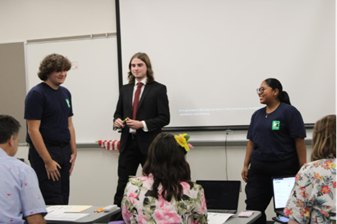Most people understand that colorblindness is a hereditary trait that affects someone’s perception of color. But that typically is as far as most people’s knowledge goes if they are not affected by it, but it is something people should understand a bit more.
What exactly is going on? Colorblindness is when there is an issue with the pigments in certain nerve cells of the eye that sense color, these are known as “Cones.” If just one of these pigments is missing, then you could potentially have issues seeing your reds and greens or even your blues and yellows. But there is a rare case in which you are not able to see color at all, resulting in just shades of grey. This leads to all the different forms and strengths of color blindness according to medlineplus.gov.
According to the National Eye Institute, the most common form of colorblindness is Deuteranomaly, a type of red-green colorblindness. However, there is also a less common type of colorblindness: Blue-Yellow colorblindness. The National Eye Institute describes this form as having only two types known as Tritanomaly and Tritanopia. Tritanomaly makes it difficult for a person to tell the difference between blue and green, and between yellow and red. Tritanopia on the other hand makes it so someone is unable to tell the difference between blue and green, purple and red, and yellow and pinks. It also makes colors less vibrant. But there is also a form of colorblindness that is not in any of these groups that makes it so someone cannot see color. This is known as monochromacy or achromatopsia, this type is extremely rare and depending on which type it is, it can affect your overall vision and make your eyes more sensitive to light.
A person that colorblindness affects here at BHS is Speech teacher Bryan Padgett. Padgett is diagnosed with Blue-Yellow colorblindness. For him, the colors being placed on top of each other made it so only one of the colors were visible. “ I found out in high school. Chalk boards were green, and a teacher wrote with red chalk on the chalk boards,” Padgett said. “I couldn’t see what was on it whatsoever.” This affects him as a teacher as it makes it difficult for him to see red from black font which has become a challenge for him when looking through revisions made by his students. This also affects how he teaches when using slides. He designs them in a way that he can see them as most students will be able to see it if he is able to. This has resulted in vibrant and colorful slides.

























